Nelson Flower Bouquets
Nelson Flower Bouquets – Flowers and Potted Plants
Nelson Flower Bouquets
Nelson Flower Bouquets – Flowers and Potted Plants
📍 Nelson Flower Bouquets
San Clemente's
Indoor and Outdoor Plants, Potted Plants, Potted Vegetable Plants, Potted Herbs, Succulents, Potted Fruit Plants, Planting and Care Taking Classes, Fresh Flowers
Inspired by San Clemente’s Coastal Beauty
📍 Nelson Flower Bouquets
San Clemente's
Indoor and Outdoor Plants, Potted Plants, Potted Vegitable Plants, Potted Herbs, Succulents, Potted Fruit Plants, Planting and Care Taking Classes, Fresh Flowers
Inspired by San Clemente’s Coastal Beauty
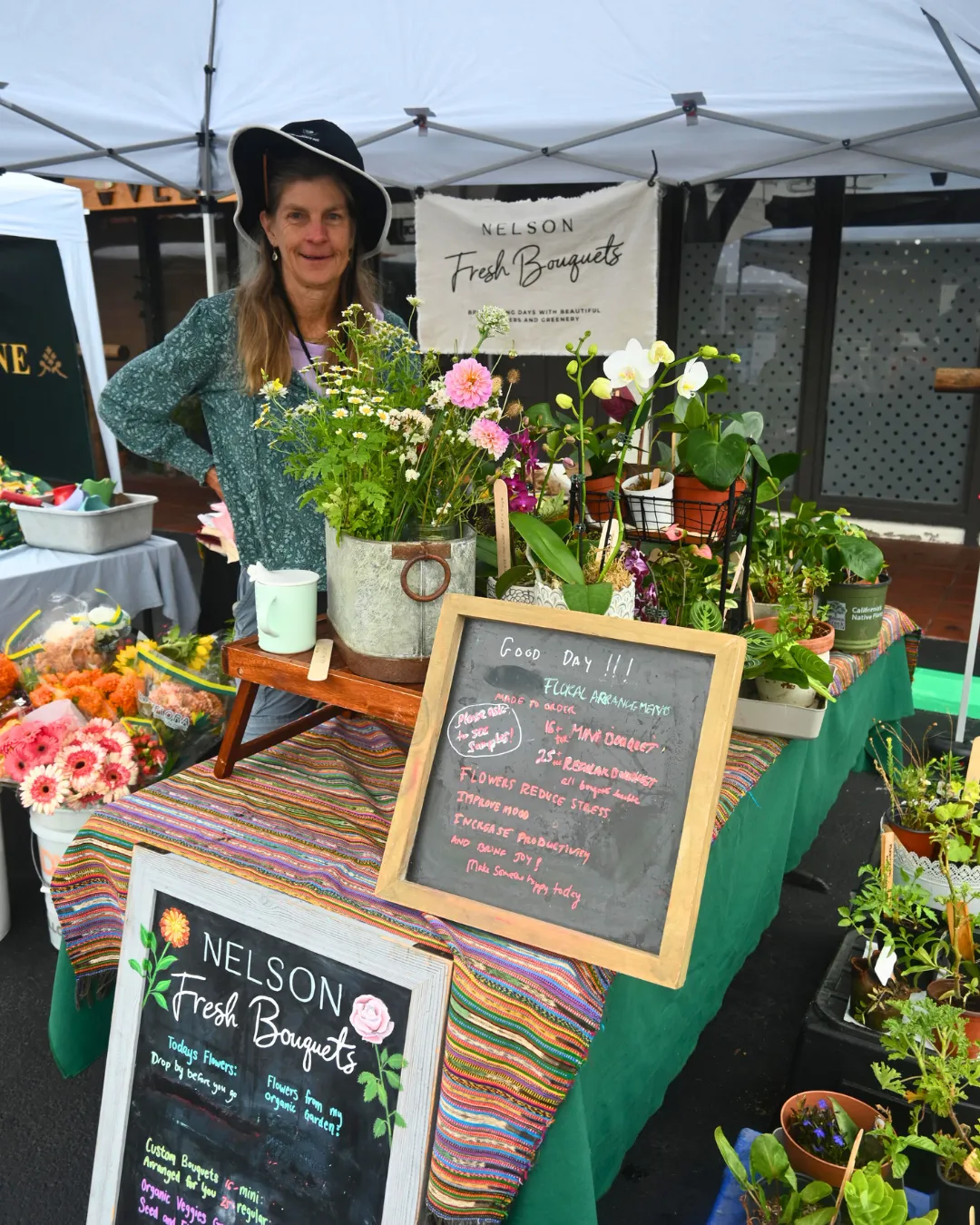
All About Nelson Flower Bouquets
All About Nelson Flower Bouquets
Nelson Fresh Bouquets are out of San Diego and we grow all the seed organically vegitable plants, flower plants and put them up for sale. The beautiful flowers in my garden we also put up for sale for your enjoyment.
We are different, a lot of times like Home Depot might be growing everything in a greenhouse and and also using pesticides. I don't use any pesticides. Its all from my garden and so it's all grown from seed.
We do really well with a lot of my house plants. We sell a lot of orchids. I like to work with my customers and teach people a lot about how to grow the plants so that they're effective when they get home and so they really understand it. A lot of it is educating people. I Tell them how to fertilize. I also teach people how to fertilize with household ingredients.
We've grown flowers, veggies, plants and sold them for the past 35 years.
Nelson Fresh Bouquets are out of San Diego and we grow all the seed organically vegetable plants, flower plants and put them up for sale. The beautiful flowers in my garden we also put up for sale for your enjoyment.
We are different, a lot of times like Home Depot might be growing everything in a greenhouse and and also using pesticides. I don't use any pesticides. Its all from my garden and so it's all grown from seed.
We do really well with a lot of my house plants. We sell a lot of orchids. I like to work with my customers and teach people a lot about how to grow the plants so that they're effective when they get home and so they really understand it. A lot of it is educating people. I Tell them how to fertilize. I also teach people how to fertilize with household ingredients.
We've grown flowers, veggies, plants and sold them for the past 35 years.
We also do like and grow milkeed. Cuz I like the butterflies. My favorite plant that I really like right now is a salosia. We specialize in inside the home plants.
If someone places an order with us and we don't have it here, we can ship it to you. If you want to get plants every time during certain seasons of the year we can coordinate with you to ship or pickup your plants
Market Hours
🗓️ Every Second Saturday of the Month
🕖 10:00 am to 2:00 PM
We also do like and grow milkeed. Cuz I like the butterflies. My favorite plant that I really like right now is a salosia. We specialize in inside the home plants.
If someone places an order with us and we don't have it here, we can ship it to you. If you want to get plants every time during certain seasons of the year we can coordinate with you to ship or pickup your plants
How to Buy and Contact Us when we are not at the Old Town Market
For unique, handcrafted designs, contact at (619)204-2944 or [email protected]
VISIT US AT THE: Old Town Market
🗓️ Every Second Saturday of the Month
🕖 10:00 AM – 2:00 PM
LOCATION: Old Town San Clemente, 111 W. Avenida Palizada, San Clemente, CA 92672
Nelson Flower Bouquets – Indoor and Outdoor Plants, Potted Plants, Potted Vegitables, Potted Herbs, Succulents, Planting and Care Taking Classes, Fresh Flowers

Vegetables are edible parts of plants that are consumed by humans or other animals as food. This original meaning is still commonly used, and is applied to plants collectively to refer to all edible plant matter, including flowers, fruits, stems, leaves, roots, and seeds. An alternative definition is applied somewhat arbitrarily, often by culinary and cultural tradition; it may include savoury fruits such as tomatoes and courgettes, flowers such as broccoli, and seeds such as pulses, but exclude foods derived from some plants that are fruits, flowers, nuts, and cereal grains.
Originally, vegetables were collected from the wild by hunter-gatherers and entered cultivation in several parts of the world, probably during the period 10,000 BC to 7,000 BC, when a new agricultural way of life developed. At first, plants that grew locally were cultivated, but as time went on, trade brought common and exotic crops from elsewhere to add to domestic types. Nowadays, most vegetables are grown all over the world as climate permits, and crops may be cultivated in protected environments in less suitable locations. China is the largest producer of vegetables, and global trade in agricultural products allows consumers to purchase vegetables grown in faraway countries. The scale of production varies from subsistence farmers supplying the needs of their family for food, to agribusinesses with vast acreages of single-product crops. Depending on the type of vegetable concerned, harvesting the crop is followed by grading, storing, processing, and marketing.
Vegetables can be eaten either raw or cooked and play an important role in human nutrition, being mostly low in fat and carbohydrates, but high in vitamins, minerals and dietary fiber. Many nutritionists encourage people to consume plenty of fruit and vegetables, five or more portions a day often being recommended.
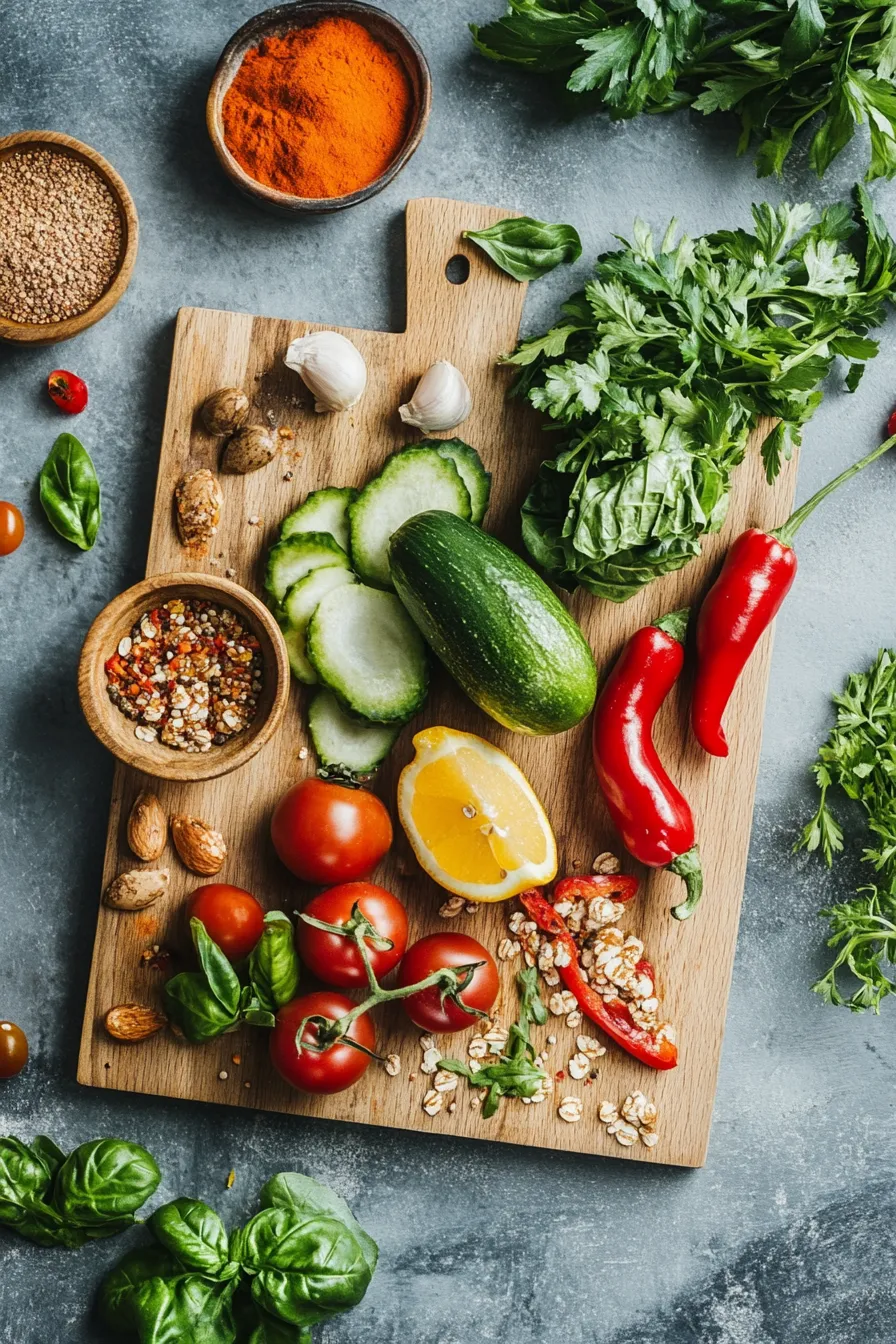
In botany, a fruit is the seed-bearing structure in flowering plants (angiosperms) that is formed from the ovary after flowering.
Fruits are the means by which angiosperms disseminate their seeds. Edible fruits in particular have long propagated using the movements of humans and other animals in a symbiotic relationship that is the means for seed dispersal for the one group and nutrition for the other; humans, and many other animals, have become dependent on fruits as a source of food. Consequently, fruits account for a substantial fraction of the world's agricultural output, and some (such as the apple and the pomegranate) have acquired extensive cultural and symbolic meanings.
In common language and culinary usage, fruit normally means the seed-associated fleshy structures (or produce) of plants that typically are sweet (or sour) and edible in the raw state, such as apples, bananas, grapes, lemons, oranges, and strawberries. In botanical usage, the term fruit also includes many structures that are not commonly called as such in everyday language, such as nuts, bean pods, corn kernels, tomatoes, and wheat grains.
Food Uses of Fruits.
A large variety of fruits – fleshy (simple) fruits from apples to berries to watermelon; dry (simple) fruits including beans and rice and coconuts; aggregate fruits including strawberries, raspberries, blackberries, pawpaw; and multiple fruits such as pineapple, fig, mulberries – are commercially valuable as human food. They are eaten both fresh and as jams, marmalade and other fruit preserves. They are used extensively in manufactured and processed foods (cakes, cookies, baked goods, flavorings, ice cream, yogurt, canned vegetables, frozen vegetables and meals) and beverages such as fruit juices and alcoholic beverages (brandy, fruit beer, wine). Spices like vanilla, black pepper, paprika, and allspice are derived from berries. Olive fruit is pressed for olive oil and similar processing is applied to other oil-bearing fruits and vegetables. Some fruits are available all year round, while others
Fruits are also used for socializing and gift-giving in the form of fruit baskets and fruit bouquets.
Typically, many botanical fruits – "vegetables" in culinary parlance – (including tomato, green beans, leaf greens, bell pepper, cucumber, eggplant, okra, pumpkin, squash, zucchini) are bought and sold daily in fresh produce markets and greengroceries and carried back to kitchens, at home or restaurant, for preparation of meals.
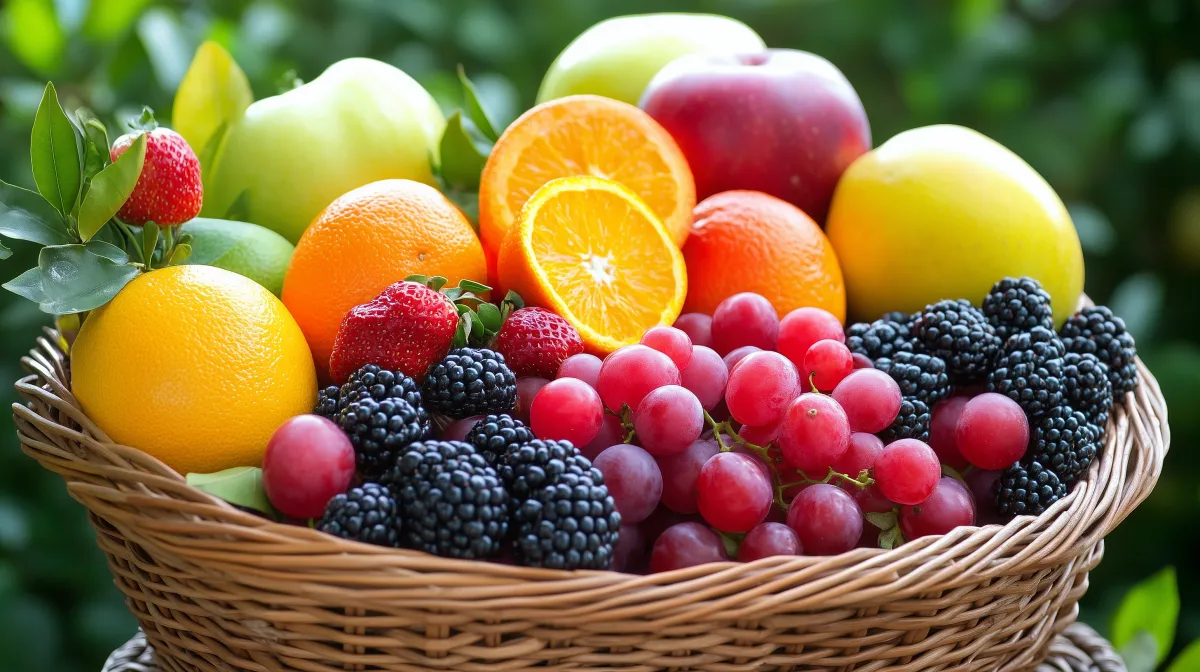
Flowers, also known as blossoms and blooms, are the reproductive structures of flowering plants. Typically, they are structured in four circular levels around the end of a stalk. These include: sepals, which are modified leaves that support the flower; petals, often designed to attract pollinators; male stamens, where pollen is presented; and female gynoecia, where pollen is received and its movement is facilitated to the egg. When flowers are arranged in a group, they are known collectively as an inflorescence.
The development of flowers is a complex and important part in the life cycles of flowering plants. In most plants, flowers are able to produce sex cells of both sexes. Pollen, which can produce the male sex cells, is transported between the male and female parts of flowers in pollination. Pollination can occur between different plants, as in cross-pollination, or between flowers on the same plant or even the same flower, as in self-pollination. Pollen movement may be caused by animals, such as birds and insects, or non-living things like wind and water. The colour and structure of flowers assist in the pollination process.
After pollination, the sex cells are fused together in the process of fertilisation, which is a key step in sexual reproduction. Through cellular and nuclear divisions, the resulting cell grows into a seed, which contains structures to assist in the future plant's survival and growth. At the same time, the female part of the flower forms into a fruit, and the other floral structures die. The function of fruit is to protect the seed and aid in its dispersal away from the mother plant. Seeds can be dispersed by living things, such as birds who eat the fruit and distribute the seeds when they defecate. Non-living things like wind and water can also help to disperse the seeds.
succulent plants, also known as succulents, are plants with parts that are thickened, fleshy, and engorged, usually to retain water in arid climates or soil conditions.
Succulents may store water in various structures, such as leaves and stems. The water content of some succulent organs can get up to 90–95%, such as Glottiphyllum semicyllindricum and Mesembryanthemum barkleyii. Some definitions also include roots, thus geophytes that survive unfavorable periods by dying back to underground storage organs (caudex) may be regarded as succulents. The habitats of these water-preserving plants are often in areas with high temperatures and low rainfall, such as deserts, but succulents may be found even in alpine ecosystems growing in rocky or sandy soil. Succulents are characterized by their ability to thrive on limited water sources, such as mist and dew, which makes them equipped to survive in ecosystems that contain scarce water sources.
Succulents are not a taxonomic category, since the term describes only the attributes of a particular species; some species in a genus such as Euphorbia, or family such as Asphodelaceae may be succulent, whereas others are less so or not at all. Multiple plant families contain both succulent and non-succulent species.
In some families, such as Aizoaceae, Cactaceae, and Crassulaceae, most species are succulents. In horticultural use, the term is sometimes used in a way that excludes plants that botanists would regard as succulents, such as cacti. Succulents are often grown as ornamental plants because of their striking and unusual appearance, as well as their ability to thrive with relatively minimal care..
By definition, succulent plants are drought-resistant plants in which the leaves, stem, or roots have become more than usually fleshy by the development of water-storing tissue. Other sources exclude roots as in the definition "a plant with thick, fleshy and swollen stems and/or leaves, adapted to dry environments". The difference affects the relationship between succulents and "geophytes"–plants that survive unfavorable seasons as a resting bud on an underground organ.
The underground organs, such as bulbs, corms, and tubers, are often fleshy with water-storing tissues. Thus, if roots are included in the definition, many geophytes would be classed as succulents. Plants adapted to living in dry environments such as succulents, are termed xerophytes. Not all xerophytes are succulents, since there are other ways of adapting to a shortage of water, e.g., by developing small leaves which may roll up or having leathery rather than succulent leaves. Nor are all succulents xerophytes, as plants such as Crassula helmsii are both succulent and aquatic.
The center rosette of Aloe polyphylla
Some who grow succulents as a hobby may use the term in a different way from botanists. In horticultural use, the term succulent regularly excludes cacti. For example, Jacobsen's three volume Handbook of Succulent Plants does not include cacti.
A houseplant, also known as a pot plant, potted plant, or indoor plant, is an ornamental plant cultivated indoors for aesthetic or practical purposes. These plants are commonly found in homes, offices, and various indoor spaces, where they contribute to the ambiance by adding natural beauty and improving air quality. Most houseplants are tropical or semi-tropical species, as they thrive in the warm, humid conditions often found indoors. Many of them are epiphytes (plants that grow on other plants), succulents (which store water in their leaves), or cacti, which are particularly well-suited to indoor environments due to their low maintenance requirements. Whether used to brighten up a space, improve air circulation, or create a calming atmosphere, houseplants play an important role in enhancing the indoor environment.
Care
"Flowers on the Windowsill", 1894
Houseplants have care requirements that differ from plants grown outdoors. Moisture, light, soil mixture, temperature, ventilation, humidity, fertilizers, and potting are all important factors. Each plant species has different care requirements, and care requirements can vary based on the specific pot, location in a particular home and potting mix used. However, all potted plants should have drainage holes to prevent root rot. One way to ensure drainage without a saucer below the pot to catch drippings is by using a "cache pot", which is essentially a larger pot intended to catch excess water, with an interior pot, often made of plastic, as the inner sleeve holding the soil.
Most houseplants are species that have adapted to survive in a temperature range between 15 and 25 °C (59 and 77 °F) year-round, as those adapted for temperate environments require winter temperatures outside of normal indoor conditions. Within that limitation, there are houseplants which are native to many different types of habitats, from tropical rainforests to succulents and cacti native to deserts. Many houseplants are either epiphytes or live in seasonally dry ecosystems that help them adapt to the dry indoor air and inconsistent watering many houseplants are subject to. Often, houseplants from tropical areas are understory plants, and because they grow in shady conditions naturally, they are often able to thrive in lower-light conditions.
Selected houseplants are typically of healthy origin, with tidy leaves and upright stems. Houseplants which survive in conditions similar to a homeowner's living space will have a higher probability of survival. Tropical houseplants which grow under high thresholds of heat, for instance, will grow sun leaves which contain fewer chloroplasts. Plants which grow in the shade will grow shade leaves, containing more chloroplasts. Horticulturists at Texas A&M University recommend acclimatization, a gradual process in which plants with too much or too little light or heat exposure are balanced accordingly to prevent overexposure. The brightness and strength of the light source under which a plant lives, including how long it spends under that light source, is vital to its survival. Other factors, like humidity and ventilation, must be kept under regular levels to prevent plant failure and susceptibility to disease.
Houseplants are typically grown in specialized soilless mixtures called potting compost (in the UK), potting mix, or potting soil. Most potting mixes contain a combination of peat or coir and vermiculite or perlite.
Keeping plants consistently too wet ("overwatering") leads to the roots sitting in water, which often leads to root rot. Root rot is the most common cause of death for houseplants but keeping houseplants too dry ("under-watering") can also be detrimental.
Plants require nitrate, phosphate, and potassium to survive, as well as micronutrients including boron, zinc, manganese, iron, copper, molybdenum, and chlorine. Houseplants do not have access to these nutrients unless they are fertilized regularly.
House plants are generally planted in pots that have drainage holes, to reduce the likelihood of over-watering and standing water. Pots are typically broken down into two groups: porous and non-porous. Porous pots (usually terracotta) provide better aeration as air passes laterally through the sides of the pot. Non-porous pots such as glazed or plastic pots tend to hold moisture longer and restrict airflow.
Houseplants experience a range of pests. Fungus gnats, spider mites, mealybugs, thrips and scale are common pests.
With the right care, succulents avoid pests and diseases and achieve optimal growth. By picking the right succulent and taking care of its soil and watering needs, the houseplant lives long to serve its purpose.
Indoor environment
Houseplants positively influence the indoor environment by improving the microbiome, increasing beneficial bacteria, and reducing harmful fungi,[10] which can enhance air quality and health. They also boost humidity levels through transpiration, helping to prevent dryness in the air and discomfort to the skin and respiratory system. Plants regulate temperature by providing natural cooling and reduce noise by absorbing sound, creating a more comfortable and peaceful indoor atmosphere. These benefits make houseplants valuable for both physical well being and overall indoor comfort.
Alternative growing methods
Houseplants are also grown in a variety of media other than potting mix, often in a hydroponic or semi-hydroponic system. This may overlap with aquascaping. Materials like sand, gravel, brick, expanded clay aggregate and styrofoam may be employed.
Some epiphytic plants may be grown mounted, either with their roots in potting mix and their stems attached to supports, or with their roots wrapped in sphagnum moss and attached to a vertical surface with wire. This can also overlap with the practice of kokedama.
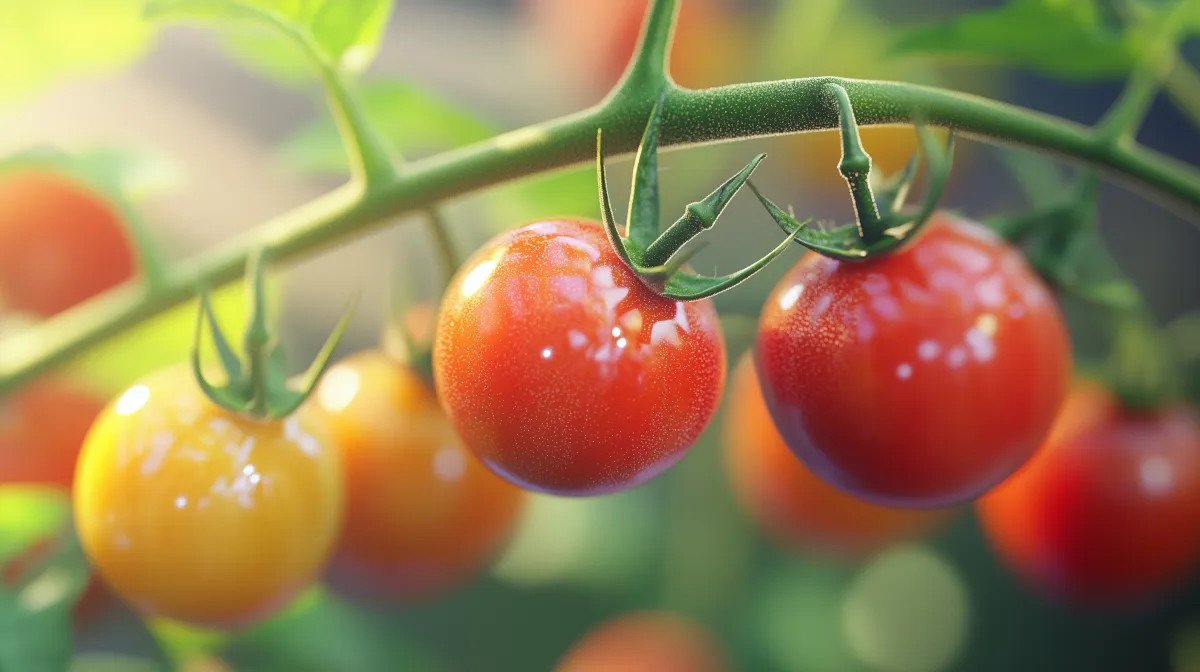
A houseplant, also known as a pot plant, potted plant, or indoor plant, is an ornamental plant cultivated indoors for aesthetic or practical purposes. These plants are commonly found in homes, offices, and various indoor spaces, where they contribute to the ambiance by adding natural beauty and improving air quality. Most houseplants are tropical or semi-tropical species, as they thrive in the warm, humid conditions often found indoors. Many of them are epiphytes (plants that grow on other plants), succulents (which store water in their leaves), or cacti, which are particularly well-suited to indoor environments due to their low maintenance requirements. Whether used to brighten up a space, improve air circulation, or create a calming atmosphere, houseplants play an important role in enhancing the indoor environment.
Care
"Flowers on the Windowsill", 1894
Houseplants have care requirements that differ from plants grown outdoors. Moisture, light, soil mixture, temperature, ventilation, humidity, fertilizers, and potting are all important factors. Each plant species has different care requirements, and care requirements can vary based on the specific pot, location in a particular home and potting mix used. However, all potted plants should have drainage holes to prevent root rot. One way to ensure drainage without a saucer below the pot to catch drippings is by using a "cache pot", which is essentially a larger pot intended to catch excess water, with an interior pot, often made of plastic, as the inner sleeve holding the soil.
Most houseplants are species that have adapted to survive in a temperature range between 15 and 25 °C (59 and 77 °F) year-round, as those adapted for temperate environments require winter temperatures outside of normal indoor conditions. Within that limitation, there are houseplants which are native to many different types of habitats, from tropical rainforests to succulents and cacti native to deserts. Many houseplants are either epiphytes or live in seasonally dry ecosystems that help them adapt to the dry indoor air and inconsistent watering many houseplants are subject to. Often, houseplants from tropical areas are understory plants, and because they grow in shady conditions naturally, they are often able to thrive in lower-light conditions.
Selected houseplants are typically of healthy origin, with tidy leaves and upright stems. Houseplants which survive in conditions similar to a homeowner's living space will have a higher probability of survival. Tropical houseplants which grow under high thresholds of heat, for instance, will grow sun leaves which contain fewer chloroplasts. Plants which grow in the shade will grow shade leaves, containing more chloroplasts. Horticulturists at Texas A&M University recommend acclimatization, a gradual process in which plants with too much or too little light or heat exposure are balanced accordingly to prevent overexposure. The brightness and strength of the light source under which a plant lives, including how long it spends under that light source, is vital to its survival. Other factors, like humidity and ventilation, must be kept under regular levels to prevent plant failure and susceptibility to disease.
Houseplants are typically grown in specialized soilless mixtures called potting compost (in the UK), potting mix, or potting soil. Most potting mixes contain a combination of peat or coir and vermiculite or perlite.
Keeping plants consistently too wet ("overwatering") leads to the roots sitting in water, which often leads to root rot. Root rot is the most common cause of death for houseplants but keeping houseplants too dry ("under-watering") can also be detrimental.
Plants require nitrate, phosphate, and potassium to survive, as well as micronutrients including boron, zinc, manganese, iron, copper, molybdenum, and chlorine. Houseplants do not have access to these nutrients unless they are fertilized regularly.
House plants are generally planted in pots that have drainage holes, to reduce the likelihood of over-watering and standing water. Pots are typically broken down into two groups: porous and non-porous. Porous pots (usually terracotta) provide better aeration as air passes laterally through the sides of the pot. Non-porous pots such as glazed or plastic pots tend to hold moisture longer and restrict airflow.
Houseplants experience a range of pests. Fungus gnats, spider mites, mealybugs, thrips and scale are common pests.
With the right care, succulents avoid pests and diseases and achieve optimal growth. By picking the right succulent and taking care of its soil and watering needs, the houseplant lives long to serve its purpose.
Indoor environment
Houseplants positively influence the indoor environment by improving the microbiome, increasing beneficial bacteria, and reducing harmful fungi, which can enhance air quality and health. They also boost humidity levels through transpiration, helping to prevent dryness in the air and discomfort to the skin and respiratory system. Plants regulate temperature by providing natural cooling and reduce noise by absorbing sound, creating a more comfortable and peaceful indoor atmosphere. These benefits make houseplants valuable for both physical well being and overall indoor comfort.
Alternative growing methods
Houseplants are also grown in a variety of media other than potting mix, often in a hydroponic or semi-hydroponic system. This may overlap with aquascaping. Materials like sand, gravel, brick, expanded clay aggregate and styrofoam may be employed.
Some epiphytic plants may be grown mounted, either with their roots in potting mix and their stems attached to supports, or with their roots wrapped in sphagnum moss and attached to a vertical surface with wire. This can also overlap with the practice of kokedama.

Effects of houseplants
Air quality
Although houseplants are commonly considered to have an active, positive effect on indoor air quality, much of the non-academic reporting on the subject is based on experiments involving the removal of volatile organic compounds (VOCs) from the air, the evidence for which is unclear.
The 1989 NASA Clean Air Study was set up to research ways to clean the air in sealed environments such as space stations. This included an early study on the ability of potted plants to remove VOCs, which concluded that plants, specifically a combination of their roots and the soil microorganisms, were highly effective. However, this study tested plants in ways which are not representative of an indoor environment; in sealed chambers and with highly elevated levels of the VOCs benzene, trichloroethylene and formaldehyde. Subsequent studies have confirmed the combined role of soil and roots[ and showed that they were effective at cleaning in higher VOC concentrations, but only at lower concentrations after the process had been "kick-started" by a higher level of exposure.
Others have shown that it is possible to artificially enrich the soil directly with VOC-degrading bacteria and achieve the same result, and posited that exposure to high VOC levels (or low levels but in bursts) during experiments and the subsequent increase in such bacteria may have been a cause of the large differences seen in the results of various studies. A 2019 review paper calculated that it would require between 10 and 1000 houseplants per square meter to achieve the same level of VOC removal as occurs from passive exchange between indoor and outdoor air.
Houseplants do have a statistically significant effect on the concentrations of both carbon monoxide and carbon dioxide in normal indoor environments, reducing carbon dioxide levels by 10–25% and carbon monoxide levels by up to 90%.
Hein Burgers, Young lady reading 1873
Human well-being
There are also many claimed psychological and physiological benefits to having houseplants. A 2022 systematic review with some meta-analyses included 42 studies which together measured the following human functions to study the benefits of indoor plants:
Physiology:
Reaction time
Pain tolerance
Skin and body temperature
Blood pressure, heart rate, heart rate variability, blood saturation, blood volume pulse and power spectral density
Respiratory rate
Cortisol level, galvanic skin response (electrodermal activity)
Salivary amylase activity
Critical flicker fusion frequency
Cognition:
Reaction time
Performance on various tasks: sorting, productivity, association, reading, information processing, vigilance, reading span, digit span, and the stroop task
Neurobehavioral functioning assessment
Brain activity
Eye movement
Academic grades
People have long ascribed psychological benefits to growing plants; this 1915 caption states that "all your cares flee. As a nerve-soothing, health-giving, enthusing hobby, it has no equal."[51]
Behavior:
Pain tolerance and pain killer consumption
Sick leave, workplace misconduct
Health:
Pain tolerance
Pain killer consumption
Sick leave
Hospitalization days
Most but not all studies found a positive effect of plants. Each of the above functions was found to be influenced positively by the majority of the studies which measured it. The authors only had enough good-quality comparable data to synthesize six areas, from which they confirmed a statistically significant improvement only in diastolic blood pressure and academic performance.
A critical review of the experimental literature concluded in 2009:
The reviewed studies suggest that indoor plants can provide psychological benefits such as stress-reduction and increased pain tolerance. However, they also showed substantial heterogeneity in methods and results. We therefore have strong reservations about general claims that indoor plants cause beneficial psychological changes. It appears that benefits are contingent on features of the context in which the indoor plants are encountered and on characteristics of the people encountering them.
Houseplants can offer minor recovery from stress when instituted as part of an environment. The presence of a houseplant in an office setting can also increase productivity. A 2004 controlled study discovered that houseplants could improve mental focus, stabilize mood, and raise psychological motivation when present in otherwise unadorned environments.
List of common houseplants
Epipremnum aureum or Pothos is one of the most common houseplants and has many variegated forms.
Tropical and subtropical
Ficus elastica, or the rubber plant, is a common house plant but is also a tree which can grow up to 30–40 metres (98–131 ft) tall in the wild.
Aglaonema (Chinese evergreen)
Alocasia and Colocasia spp. (elephant ear)
Anthurium spp.
Aphelandra squarrosa (zebra plant)
Araucaria heterophylla (Norfolk Island pine)
Aspidistra elatior (cast iron plant)
Begonia species and cultivars
Bromeliaceae (bromeliads, including air plants)
Calathea, Goeppertia and Maranta spp. (prayer plants)
Chlorophytum comosum (spider plant)
Citrus (compact cultivars such as the Meyer lemon)
Ctenanthe burle-marxii (fishbone prayer plants)
Cyclamen
Dieffenbachia (dumbcane)
Epipremnum aureum (pothos)
Ferns and plants treated like ferns, such as Asparagus aethiopicus (asparagus fern) and Nephrolepis exaltata (Boston fern)
Beaucarnea recurvata (Ponytail palm)
Ficus spp., including Ficus benjamina (weeping fig), Ficus elastica (rubber plant) and Ficus lyrata (fiddle-leaf fig)
Hoya spp.
Orchidaceae (orchid) spp.
Peperomia spp.
Palms, such as Chamaedorea elegans (parlor palm) and Dypsis lutescens (areca palm),
Philodendron spp.
Monstera species (Swiss cheese plants)
Musa spp. (bananas)
Ensete spp. (ensets)
Musella (Yellow banana)
Heptapleurum arboricola (umbrella plant)
Sinningia speciosa (gloxinia)
Spathiphyllum (peace lily)
Stephanotis floribunda (Madagascar jasmine)
Streptocarpus, including Streptocarpus sect. Saintpaulia (African violets)
Tradescantia zebrina (purple wandering Jew)
Pilea peperomioides (lefse or UFO plant)
Scindapsus pictus (satin pothos)
Succulents
There are many species of cacti and succulents that stay small enough to do well as houseplants.
Snake plant, Dracaena (formerly Sansevieria) trifasciata, is known as one of the toughest and most common houseplants.
Aloe spp. including Aloe vera
Cactaceae (cacti)
Epiphyllum (orchid cacti)
Mammillaria
Opuntia (paddle cacti, including the prickly pear)
Zygocactus (Christmas cactus)
Gymnocalycium mihanovichii (chin cactus)
Ceropegia woodii (string of hearts)
Crassula ovata (jade plant)
Echeveria spp.
Haworthia spp.
Dracaena spp., including plants formerly in the genus Sansevieria, such as the snake plant or mother-in-law's tongue, Dracaena trifasciata.
Bowiea (climbing onion)
Senecio angulatus (creeping groundsel)
Curio rowleyanus (string of pearls)
Yucca spp.
Dudleya (liveforevers)
Dracaena sanderiana (lucky bamboo)
Kalanchoe spp. including Kalanchoe blossfeldiana, Kalanchoe daigremontiana, and Kalanchoe tomentosa.
Portulacaria afra (elephant bush)
Xerosicyos (silver dollar vines)
Carnivorous plants
Drosera (sundews)
Dionaea muscipula (Venus flytrap)
Forced bulbs
Many forced bulbs are also temperate.
Crocus
Hippeastrum (amaryllis)
Hyacinthus (hyacinth)
Narcissus (narcissus or daffodil)
Temperate plants
Hedera helix (English ivy)
Saxifraga stolonifera (strawberry begonia)
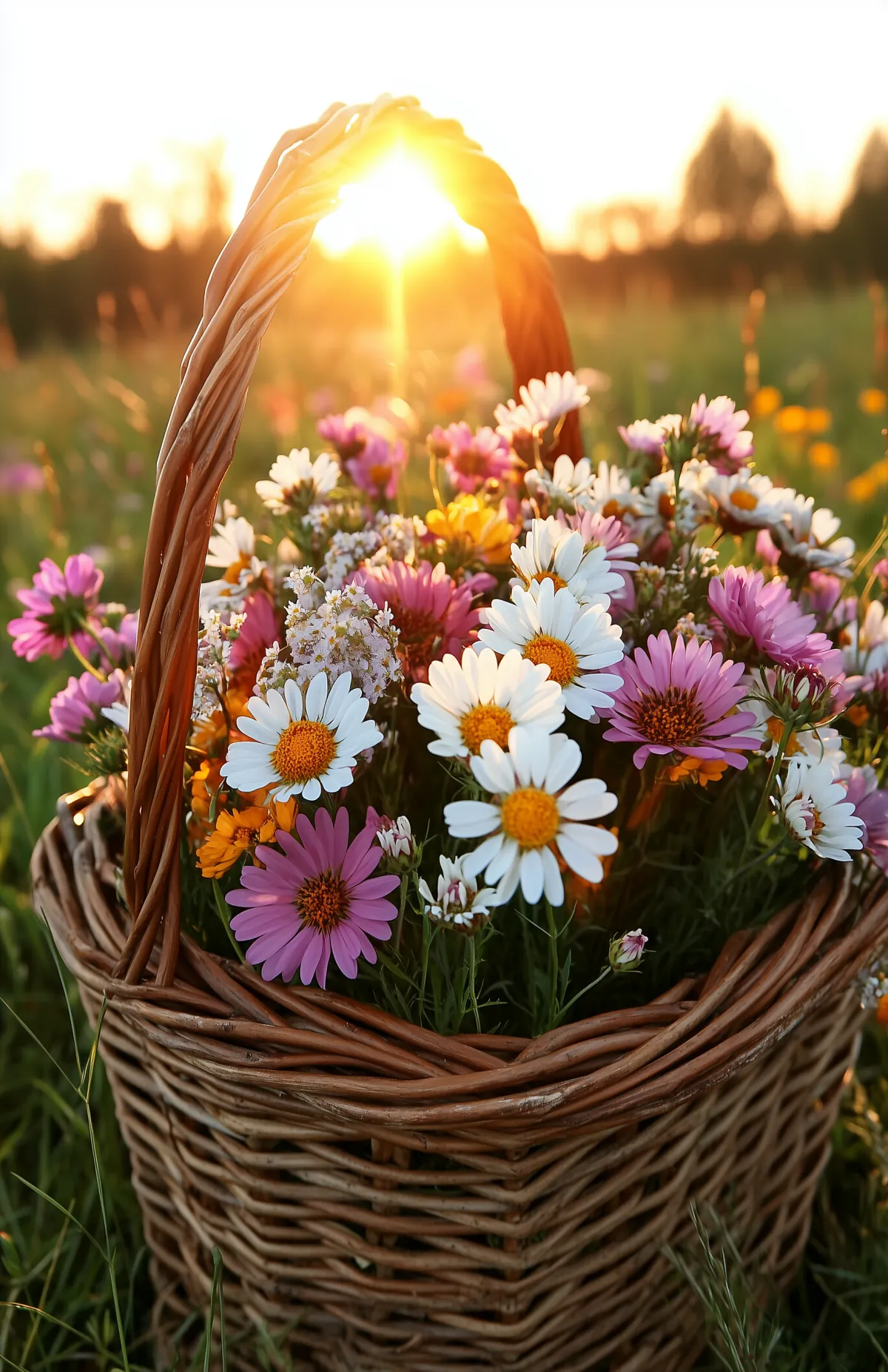
Old Town San Clemente Market
Local. Handmade. Heartfelt. Join us for a community-driven farmer's market in the heart of San Clemente.

